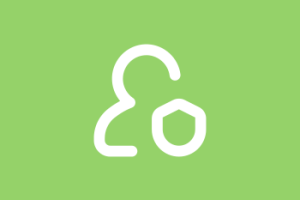Overactive bladder is a common condition that affects an estimated
50 million
people in the United States.1,2
What Is Overactive Bladder?
Overactive bladder—which your doctor may refer to as “OAB”—is an umbrella term that includes the frequent and urgent need to empty your bladder. One of the most common overactive bladder symptoms is a sudden urge to urinate, resulting in unintentional urine loss.
What are the Symptoms of Overactive Bladder?
You may be suffering from overactive bladder if:Urgency
You experience a sudden or compelling need to urinate with inability to hold urine or control it
Urgency Incontinence
You experience an urgent need to urinate and have urinary leakage accidents or trouble holding urine before making it to the restroom
Frequency
You go to the restroom to urinate so often that it disrupts your life—typically 8 or more times a day
Nocturia
You wake up more than 1 time per night because you need to urinate
Dual incontinence is when a patient is experiencing both bladder and bowel control symptoms.
Do you get sudden, strong urges to urinate and are unable to control it?
Do you go to the restroom 8 or more times a day?
Do you have accidental leakage before you make it to the restroom?
Do you have trouble urinating?
Have other treatments for your symptoms failed?
If you answered “Yes” to any of these questions, you may suffer from overactive bladder.Your journey to find the OAB treatment solution that works for you
1CONSULT WITH YOUR DOCTOR
- Discuss your overactive bladder symptoms
- Start a baseline bladder diary
- Undergo recommended diagnostic tests
- Discuss treatment options
2INITIAL TREATMENT
- Bladder training exercises
- Lifestyle changes (fluid/diet modification)
- Prescription medications
Don’t give up!
Follow up with your doctor to discuss advanced therapy options
3ADVANCED THERAPIES
- Sacral Neuromodulation
- Chemodenervation
Overactive Bladder
Patient Care Pathway
Your doctor and his or her clinical team will follow a patient care pathway, which is a roadmap of the different treatment options available to you. The pathway starts with conservative treatments and then moves on to the advanced therapies.
CONSULT WITH YOUR DOCTOR
Initial
Treatment
follow up with
Your doctor
advanced Therapies
What Is Axonics® Therapy?
Axonics Therapy is a long-term treatment known as Sacral Neuromodulation that helps restore communication between the brain, bladder and bowel. It provides gentle stimulation to the nerves that communicate between the brain, bladder, and bowel. This restores normal communication which can result in symptom improvement.
of treated patients achieved clinically significant improvements at 2-year3
Hear From the Experts

Rebecca McCrery, MD, FPMRS
Urogynecologist
There is a solution for you.
The good news is that there are overactive bladder treatment options for controlling your symptoms. Axonics Therapy is an advanced solution to treat your overactive bladder symptoms. This therapy is a clinically proven solution to help people regain urinary control.3
LEARN MORE ABOUT AXONICS THERAPYClinically proven. Patient approved.
of patients
were satisfied
with their
therapy3
IS RIGHT FOR YOU
See what patients have to say about their life-changing experience with Axonics Therapy.

I’m glad I did it, because it was a simple procedure and it’s given me tremendous results.
Be Strengthened. Be Supported.
Want to connect with a real patient to learn about their story and
results with
Axonics Therapy?
Take The Quiz. Find A Specialist.
Questions?
We are here to help answer any questions you may have about Axonics Therapy.
References:
1. Coyne KS, Sexton CC, Thompson CL, et al. The prevalence of lower urinary tract symptoms (LUTS) in the USA, the UK and Sweden: results from the Epidemiology of LUTS (EpiLUTS) study. BJU Int. 2009;104(3):352-360.
2. Census Reporter website. https://censusreporter.org/profiles/01000US-united-states/. Accessed July 19, 2019.
3. Pezzella A, McCrery R, Lane F, et al. Two-year outcomes of the ARTISAN-SNM study for the treatment of urinary urgency incontinence using the Axonics rechargeable sacral neuromodulation system. Neurourol Urodyn. 2021;40(2):714-721. doi:10.1002/nau.24615
